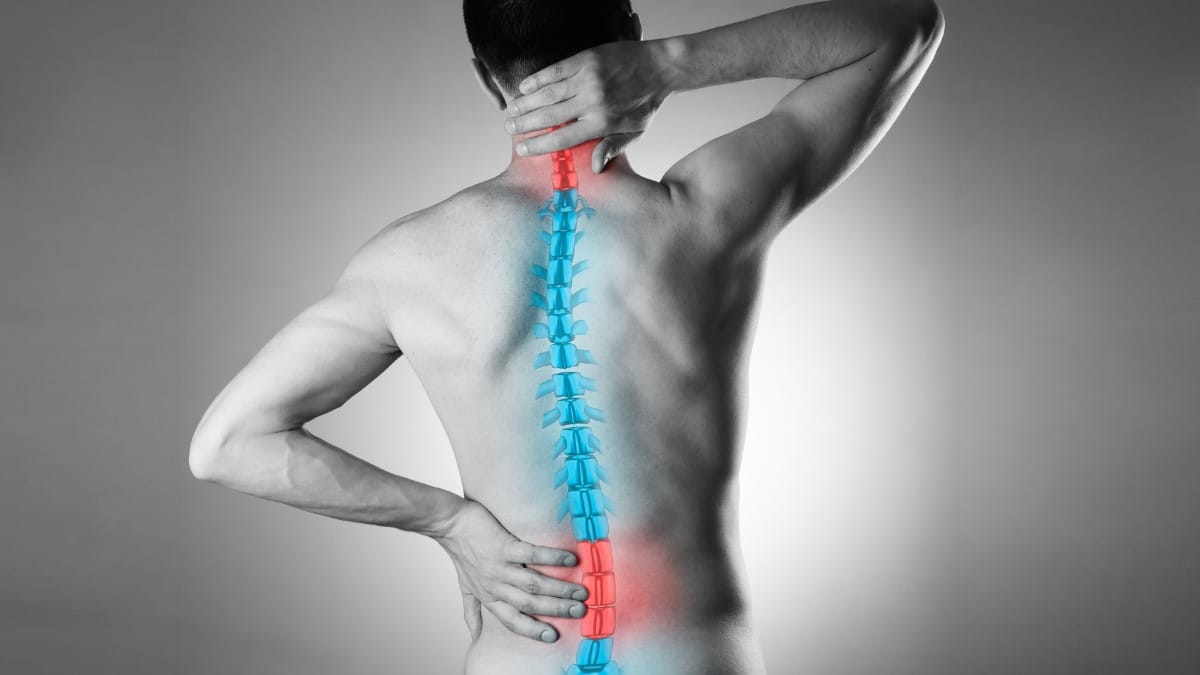Are you dealing with a hunched-back? Have you noticed your spine looks like the shape of the letter C or S? Scoliosis pain is a condition when the spine is curved to either the left or right side or both of the body.
Scoliosis pain makes the spine curve to one side. The bend caused by this can be in any part of the spine, but the most repeatedly affected areas in the body are the upper spine and lower back.
This illness is more prevalent in the childhood stages and early teenage stage. Scoliosis is not always noticeable but an arched back is visible sometimes, the condition plays an entire role to figure out whether a person’s back is fine or not.
Mild Scoliosis isn’t often obvious, although some people with it lean to one side or have unequal shoulders or hips as a result of the spine’s curve. Most of the time, the person does not require scoliosis treatment because the curve does not progress much. Doctors may recommend a mix of back bracing and therapy, depending on the degree of curvature and the child’s age.
Scoliosis surgery is only required in a small percentage of cases. Chronic pain, respiratory issues, and a diminished capacity for exercise are all possible scoliosis effects. Scoliosis is discussed in this article, including its causes, symptoms, and scoliosis treatment.
Scoliosis Prevalence
Scoliosis is described as a curvature of the spine in the frontal (coronal) plane. While the degree of curvature is measured in the coronal plane, scoliosis is a three-dimensional problem involving the following planes:
- Coronal plane
- Sagittal plane
- Axial plane
The coronal plane separates the human body into anterior (front) and posterior (back) parts by running vertically from head to foot and parallel to the shoulders. The sagittal plane separates the right and left halves of the body. The axial plane is perpendicular to the ground plane and perpendicular to the coronal and sagittal planes.
In the United States, scoliosis pain affects 2% to 3% of the population or approximately six to nine million people. Mild Scoliosis or scoliosis pain can develop during childhood or infancy. Scoliosis, on the other hand, usually begins between the ages of 10 and 15 and affects both men and women equally. Males are eight times less likely than females to reach a treatment-required curve magnitude.
Causes and Risk Factors
When scientists figure out what causes distinct varieties of scoliosis, they look for things like: neurological, when nerve abnormalities influence muscles in the spine congenital when spinal malformations are visible at birth.
There are two categories of scoliosis: structural and nonstructural. The bend in the spine is caused by a disease, accident, or birth flaw in structural scoliosis, and it is permanent.
Nonstructural scoliosis refers to curves that are only transient and can be corrected. Doctors aren’t sure what causes the most prevalent type of scoliosis, although it appears to be caused by inherited factors because the condition can run in families. Scoliosis can be caused by a numerous things, including:
- Neuromuscular diseases: these are diseases that affect the nerves and muscles. Cerebral palsy, poliomyelitis, and muscular dystrophy are among them.
- Congenital scoliosis: Scoliosis that was present at birth is known as congenital scoliosis. Scoliosis is uncommon before birth, although it can develop if the spine’s bones develop improperly while the fetus grows.
- Genes: At least one gene is thought to play a role in the development of scoliosis, according to researchers.
- Length of leg: Scoliosis pain can develop when one leg is longer than the other.
- Syndromic Scoliosis: it develops as part of a medical illness, such as neurofibromatosis or Marfan’s syndrome, which is known as syndromic scoliosis.
- Osteoporosis: Due to bone deterioration, osteoporosis can result in secondary scoliosis.
- Other factors: include poor posture, the usage of backpacks or satchels, connective tissue problems, and some traumas.
The following are risk factors for acquiring the most prevalent type of scoliosis:
- Age
Adolescents are usually the first to show signs and symptoms. - Sex
Despite the fact that both boys and girls develop mild scoliosis at roughly the same rate, girls have a considerably higher risk of the curvature deteriorating and requiring scoliosis treatment. - History of the family
Although mild scoliosis can run in families, most children with the condition do not have a family history of it.
Symptoms
In scoliosis, symptoms differ from person to person depending on the age and degree of severity. Common symptoms that prevail in the individual are:
- The skull may be somewhat off-centre, and the ribs on either side may be of varying heights.
- It’s possible that one hip is larger than the other, and that the clothing doesn’t hang evenly.
- A person may lean to one side if one shoulder or shoulder blade is higher than the other.
- It’s possible that the legs are of varying lengths.
- Heart or lung infection
- Scoliosis can cause back pain in some cases, but it is usually not severe. This is a more common symptom among older people.
- shortness of breath and chest pain in severe instances
- a bulge on one side of the chest when lying with the body curved to one side
Diagnosis and Scoliosis Treatment
Before your health practitioner can guide you with healthcare alternatives, if adult scoliosis is diagnosed, he/she will need to provide a family history. This may involve inspections about:
- Family history
- Date and time when you experienced a change in spine location
- Progression of the curve (can be found from X-rays)
- If there is any pain in a specific area
- Any bowel, bladder, or motor dysfunction, which may be indications of more severe nerve injury or damage risen by scoliosis
There are two types of scoliosis treatment options used widely around the world. Bracing and scoliosis surgery are the two main therapeutic options.
Bracing
A person with scoliosis who is still growing and has a curvature of more than 25 to 40 degrees may need to wear a brace, according to the AANS. Braces will not straighten the spine, but they will help to keep the curvature from getting worse. For cases that are diagnosed early, this scoliosis treatment strategy is more effective.
Those who require a brace must wear it for 16 to 23 hours per day until their growth stops. The effectiveness of a brace improves with the number of hours it is worn each day. Doctors normally advise children to keep their braces on until they reach adolescence and stop growing.
Underarm and Milwaukee are two commonly used methods under bracing treatment options.
Scoliosis Surgery
Scoliosis Surgery is an acute step for patients who have a curve in the back above 40 degrees. However, if you’ve been diagnosed with scoliosis and the curvature is interfering with your everyday life or causing you discomfort, chat to your doctor about this possibility.
The most common scoliosis procedure is spinal fusion. A bone graft, rods, and screws are used to fuse your vertebrae together during such scoliosis treatment. The bone graft is made of bone or a similar substance.
Your spine is kept straight by the rods, which are held in place by the screws. The bone graft and vertebrae eventually fuse together to form a single bone. Children’s rods can be changed as they develop.

When referencing outside resources, GoodrxMedicine always provides full citations. To learn more about the measures we use to maintain the quality of our content, please review our Content Information Policy.











